Investigation of Red Clay Internal Stress Anisotropy and Influence Factors
Abstract
:1. Introduction
2. Materials and Methods
2.1. Materials
2.2. Simple Preparation
2.3. Experimental Method
- (1)
- Following the standard for geotechnical testing methods, samples are saturated via the vacuum saturation technique, which includes applying a vacuum for one hour and subsequently saturating for 10 h after the saturator is fully immersed in water;
- (2)
- Once the sample’s vacuum saturation is finished, it is taken out of the saturator and placed on the permeameter for permeability testing under various overlying load conditions (i.e., 25 kPa, 50 kPa, 100 kPa, 150 kPa, 200 kPa, 250 kPa, 300 kPa, 350 kPa) using boiled, degassed tap water for the experiment. Four loading levels (50 kPa, 100 kPa, 200 kPa, 300 kPa) are chosen, and under these four load conditions, the permeation pressure is incrementally increased to investigate its impact on the permeability coefficient at different overlying loads. The initial hydraulic gradient (i0) is 1.25;
- (3)
- Correct operation of experimental apparatus, detailed recording of test results, and in-depth analysis of test results.
3. Results and Discussion
3.1. The Influence of Overlying Load on Stress Paths
3.2. The Correlation between Permeability Coefficient and Porosity
3.3. The Influence of Permeation Pressure on Stress Anisotropic
4. Conclusions
- (1)
- The stress within undisturbed red clay exhibits obvious anisotropy, and the clay cannot be considered an isotropic homogeneous body. Under the dual effects of different overburden loads, the vertical permeability coefficient kV is always greater than the horizontal permeability coefficient kH, and the permeability coefficients k in both directions are negatively correlated with lgσ.
- (2)
- With the gradual increase of overburden load, the permeability coefficient ratio kV/kH shows a decreasing trend. When the overburden load does not exceed 150 kPa, the value of kV/kH decreases linearly. However, after the overburden load exceeds 150 kPa, the rate of decrease gradually slows and eventually stabilizes, approximately at 1.77. The porosity ratio e has a linear relationship with lgkV and lgkH, based on which a predictive formula for the anisotropy of permeability coefficients in undisturbed red clay was established.
- (3)
- Permeation pressure can expand the internal stress channels of red clay, increasing its permeability coefficient, and the vertical permeability coefficient is more sensitive to permeation pressure; moreover, permeation pressure can weaken the anisotropy of seepage in red clay to a certain extent.
- (4)
- The anisotropy of stress depends on the anisotropy of pores and their connectivity; the inherent anisotropy of pores in red clay leads to the anisotropy of stress movement. However, based on the structural characteristics of the soil, the permeation characteristics of the soil in different directions are also sensitive to feedback from the external environment (such as permeation pressure) and load.
Author Contributions
Funding
Institutional Review Board Statement
Informed Consent Statement
Data Availability Statement
Conflicts of Interest
References
- Yuan, Y. The Research on Anisotropic Seepage Characteristics and Stability of Red Clay Slope Containing Crack Zone. Master’s Thesis, Changsha University of Science & Technology, Changsha, China, 2023. [Google Scholar]
- Zhu, W. Study on Crack Development and Strength Deterioration Mechanism of Red Clay under Dry-Wet Cycle. Master Thesis, Guilin University of Technology, Guilin, China, 2023. [Google Scholar]
- Peng, C.; Hu, Z.; Wang, D.; Liu, X.; Mo, B.; Fu, Z. Research on mechanical properties and micro-mechanics of red clay under coupled acid-etching-freeze-thaw cycles. J. Railw. Sci. Eng. 2023, 20, 3738. [Google Scholar]
- He, H.; Zhang, J.; Wang, Y. Analysis of the effect of fissures on seepage stability of red clay slopes. J. China Foreign Highw. 2014, 34, 6. [Google Scholar]
- Feng, X.; Xie, Z.; Chen, C.; Teng, J.; Xu, G.; Wei, H.; Geng, C. Experimental and theoretical study on the water retention characteristics of compacted red clay considering the influence of double-pore structure. J. Railw. Sci. Eng. 2023, 1–11. [Google Scholar] [CrossRef]
- Li, X.; Dong, X.; Chen, Z.; Chen, S.; Sun, Y. Study on permeability of foundation soil of bridges on lower reaches of yangtze river. Chin. J. Rock Mech. Eng. 2005, 10, 1692–1696. [Google Scholar]
- Qiao, T.; Zhou, J.; Zhang, T.; Jiang, Y. Influence of anisotropic permeability on seepage flow in underwater tunnels. J. Ground Improv. 2024, 6, 8–15. [Google Scholar]
- Jiao, D.; Chen, Y. Anisotropy and volume-contraction of soil due to axial unloading in CD test. Chin. J. Geotech. Eng. 1994, 16, 9–16. [Google Scholar]
- Zhao, J. Anisotropic soil slope stability analysis under different rainfall patterns. Coal Geol. China 2018, 30, 70–74. [Google Scholar]
- Lü, J.; Ke, X.; Zhang, X.; Li, X.J. Variability of saturated permeability coefficient of loess slopes in South Jingyang tableland. Bull. Soil Water Conserv. 2017, 37, 254–257. [Google Scholar]
- Hong, B.; Li, X.; Wang, L.; Li, L. Permeability anisotropy and microstructure of yan’an Q3 loess. J. Jilin Univ. (Earth Sci. Ed.) 2019, 49, 1389–1397. [Google Scholar]
- Zeng, W.; Xiao, X. Stability analysis of soil slopes under anisotropic conditions of permeability coefficient. J. China Foreign Highw. 2017, 37, 10–14. [Google Scholar]
- Yuan, J.; Lin, Y.; Ding, P.; Han, C. Influence of anisotropy induced by fissures on rainfall infiltration of slopes. Chin. J. Geotech. Eng. 2016, 38, 76–82. [Google Scholar]
- Fang, C. Experimental Study on Inherent Anisotropy of Engineering Properties of Plateau Lacustrine Peat Soil. Master’s Thesis, Kunming University of Science and Technology, Kunming, China, 2020. [Google Scholar]
- Liu, Y. Research on the Anisotropic of Hangzhou Silt Soil by Laboratory Tests. Master Thesis, Zhejiang University of Technology, Hangzhou, China, 2011. [Google Scholar]
- Sun, Y. Compaction Loess Strength and Permeability Anisotropy of the Research. Master Thesis, Xi’an University of Architecture and Technology, Xi’an, China, 2016. [Google Scholar]
- Leroueil, S.; Bouclin, G.; Tavenas, F.; Bergeron, L.; Rochelle, P.L. Permeability anisotropy of natural clays as a function of strain. Can. Geotech. J. 1990, 27, 568–579. [Google Scholar] [CrossRef]
- Tsien, S.I. Stability of marsh deposits. Highway Research Board. Bulletin 1955, 15, 15–43. [Google Scholar]
- Zhang, Z.; Fu, X.; Sheng, Q.; Yin, D.; Zhou, Y.; Huang, J. Effect of rainfall pattern and crack on the stability of a red bed slope: A case study in Yunnan province. Adv. Civ. Eng. 2021, 2021, 6658211. [Google Scholar] [CrossRef]
- Clapp, R.B.; Hornberger, G.M. Empirical equations for some soil hydraulic properties. Water Resour. Res. 1978, 14, 601–604. [Google Scholar] [CrossRef]
- Wang, Y.; Li, K.; Li, J.; Tang, S. Influence of soil particle size on the engineering properties and microstructure of a red clay. Appl. Sci. 2021, 11, 10887. [Google Scholar] [CrossRef]
- Wang, J.; Bao, T.; Yang, W.; Zhou, Q.; Fu, H. Analysis of influence of moisture content-temperature dual factor on mechanical properties of red clay. J. China Foreign Highw. 2023, 43, 253–258. [Google Scholar]
- Ministry of Housing and Urban Rural Development of the People’s Republic of China. Standard for Soil Test Method (GB/T 50123-2019); China Planning Press: Beijing, China, 2019. [Google Scholar]
- Zhao, T.; Qiu, Z. Soil Mechanics Test Guide and Test Report; Southwest Jiaotong University Press: Chengdu, China, 2008. (In Chinese) [Google Scholar]
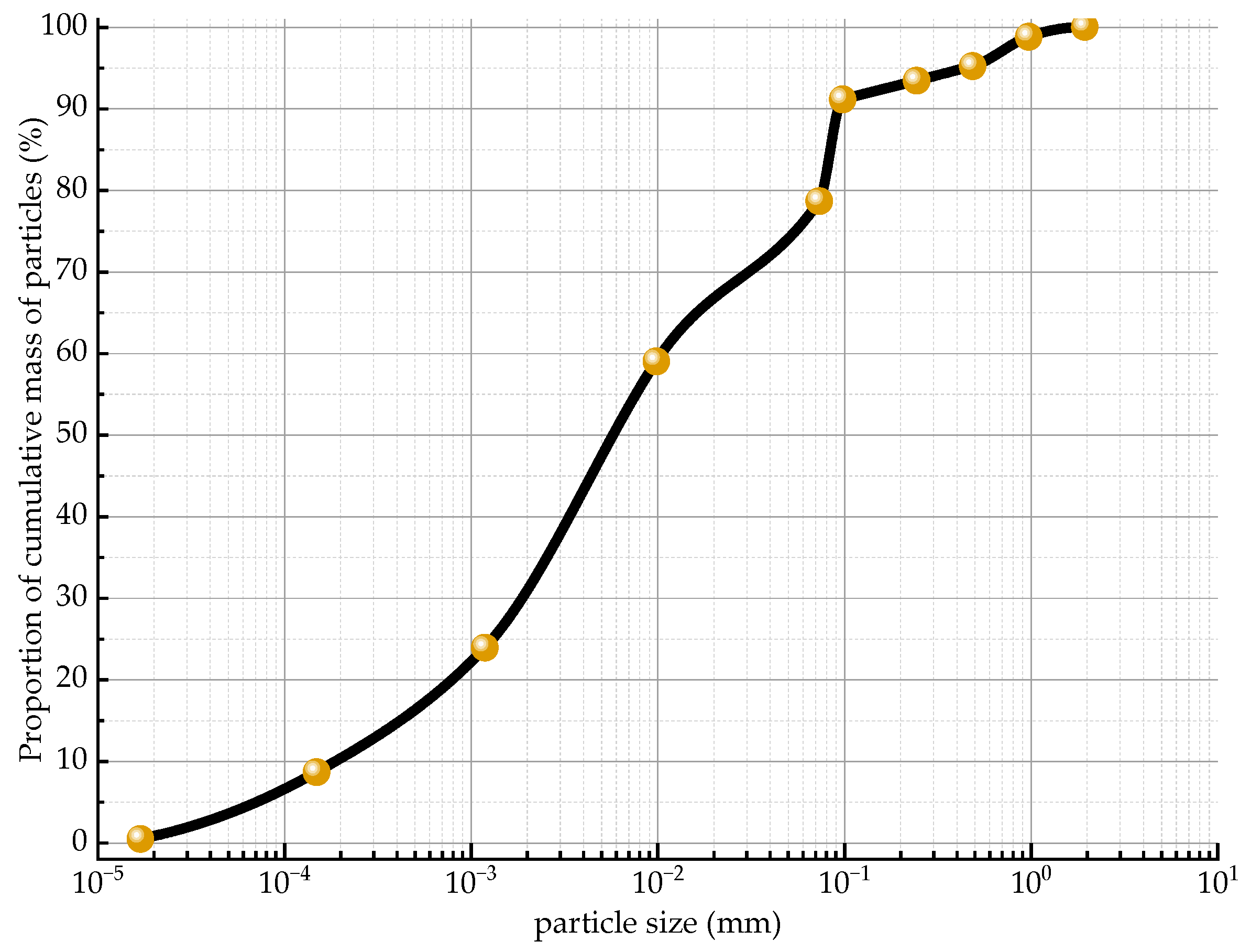
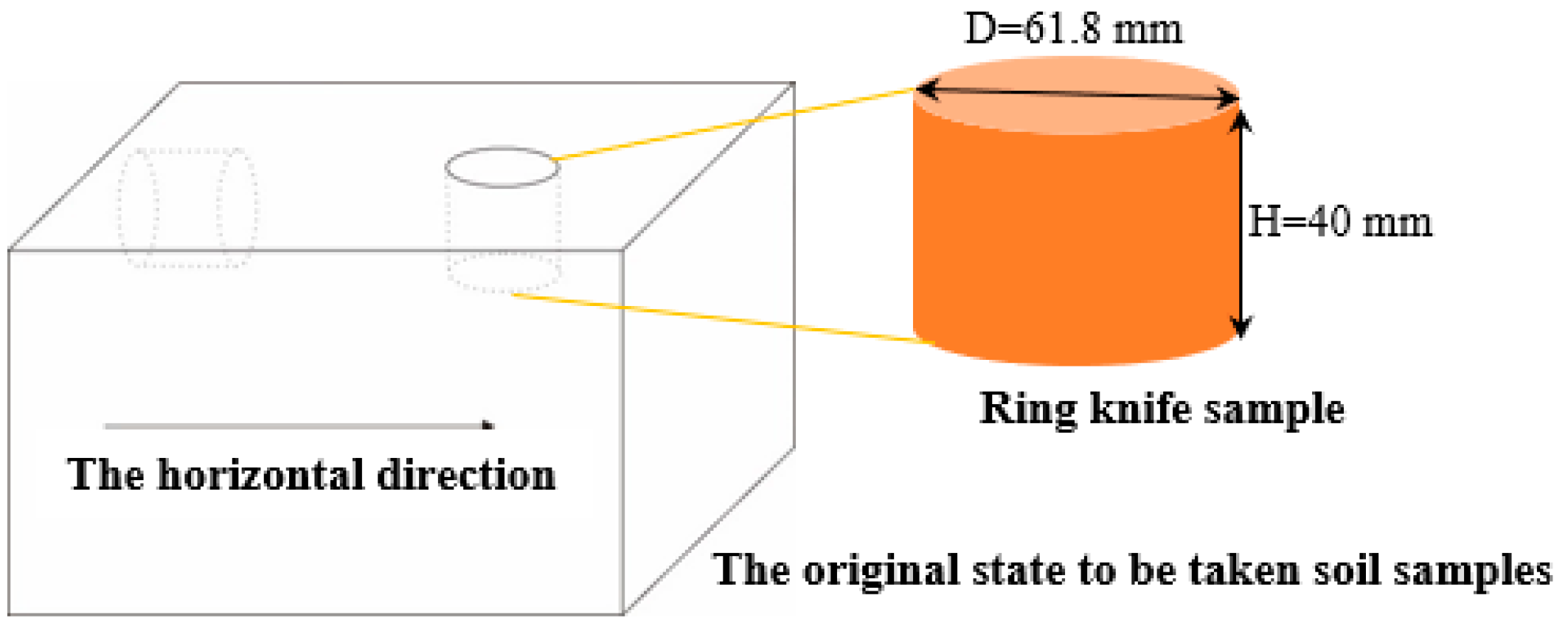
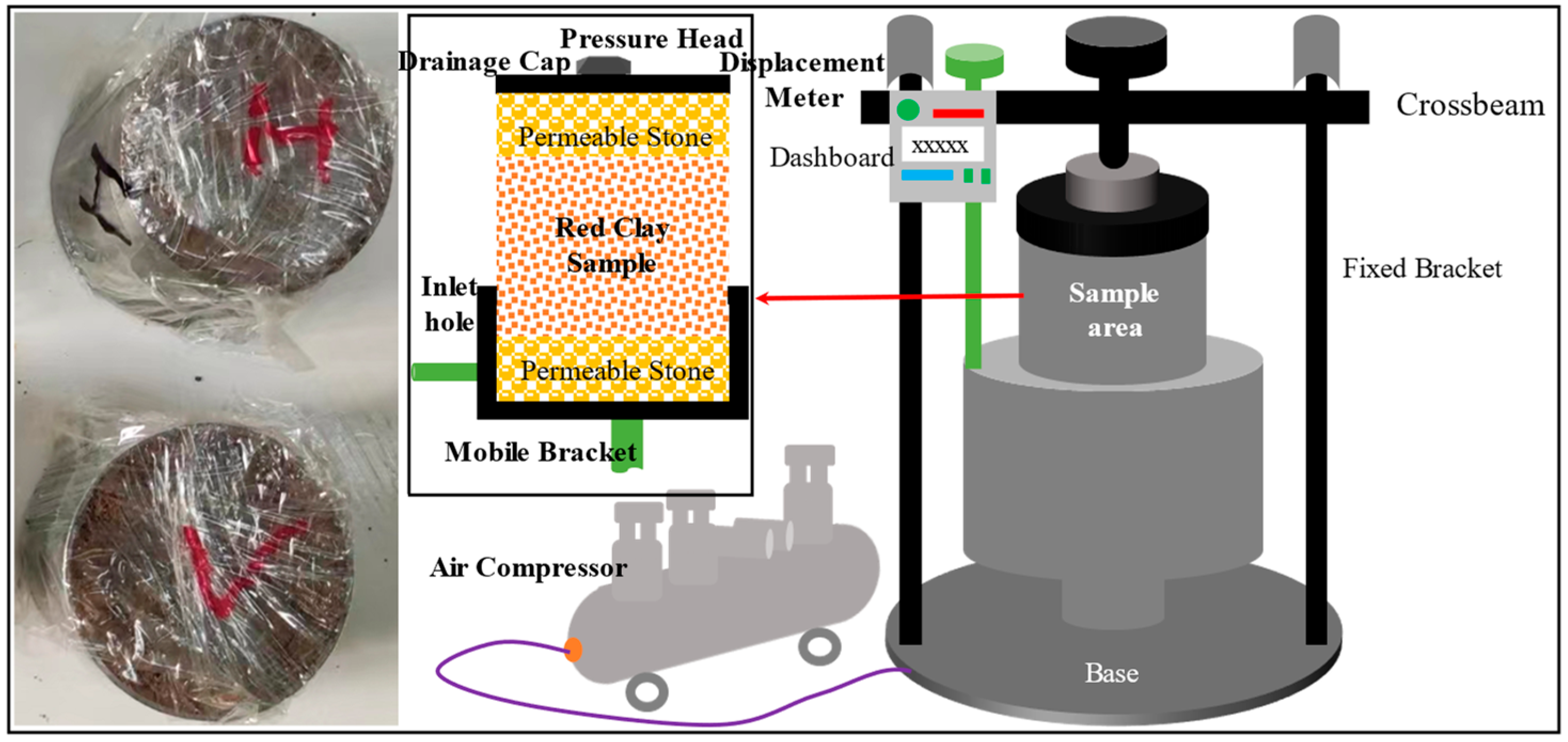


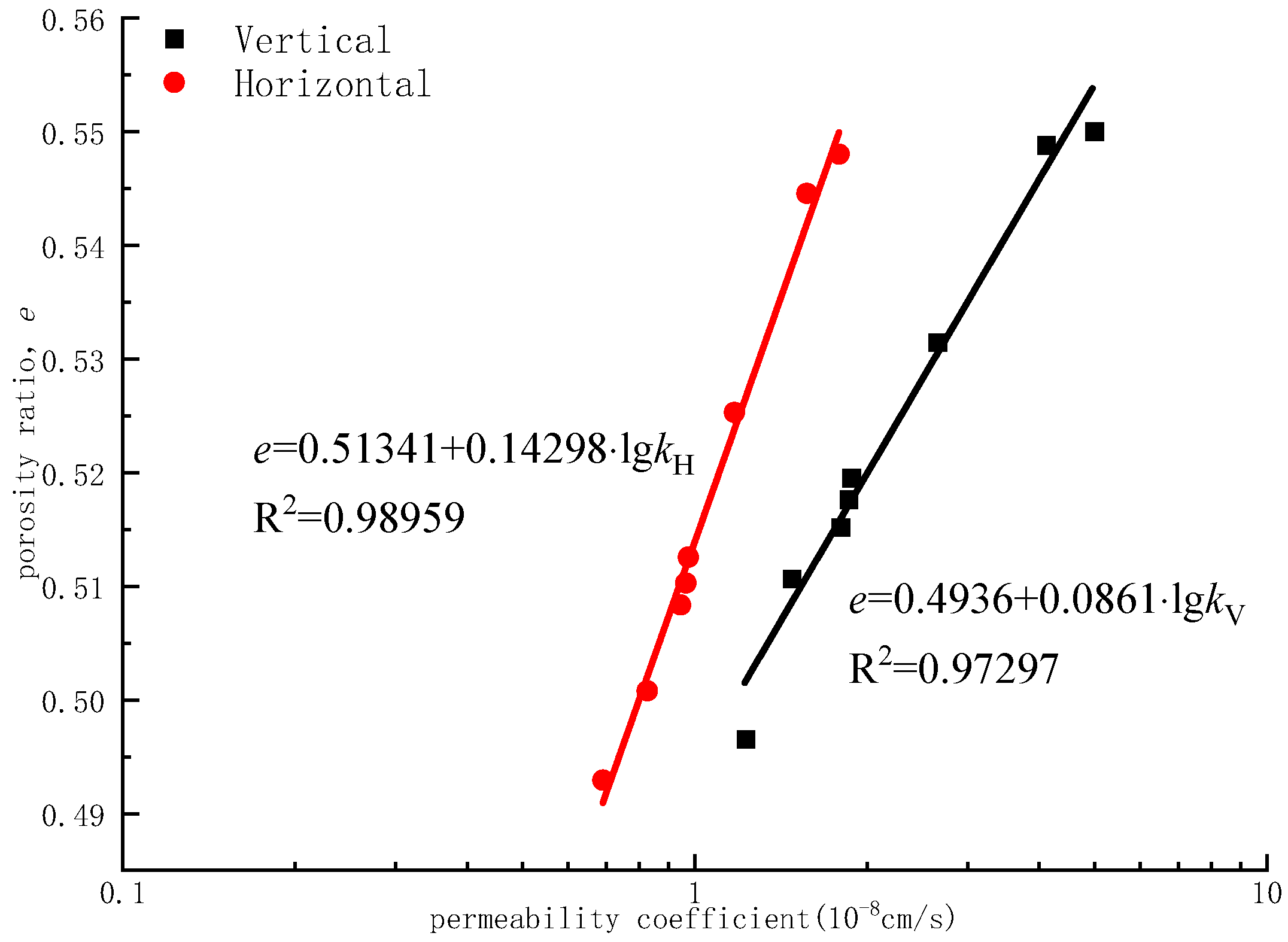
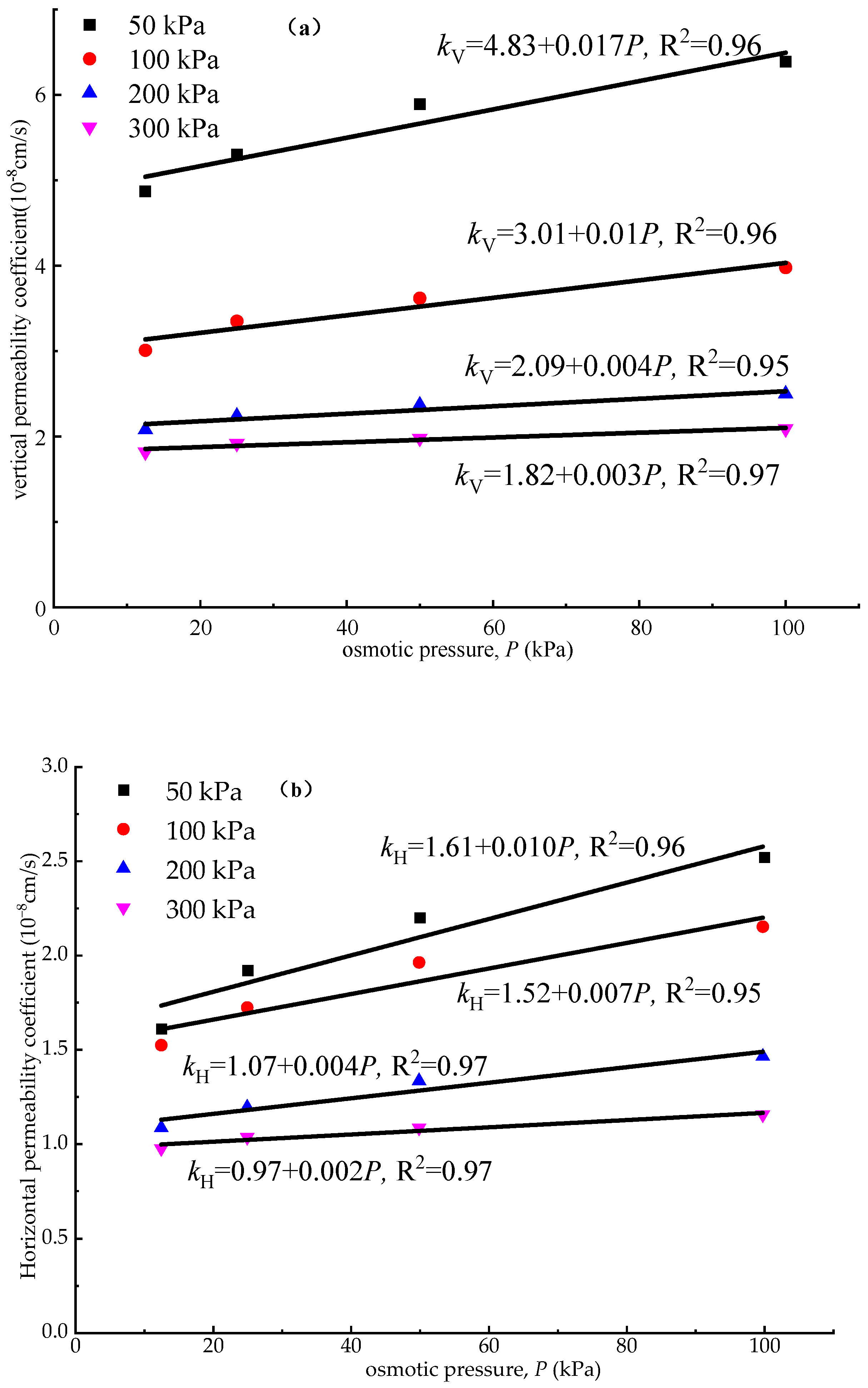
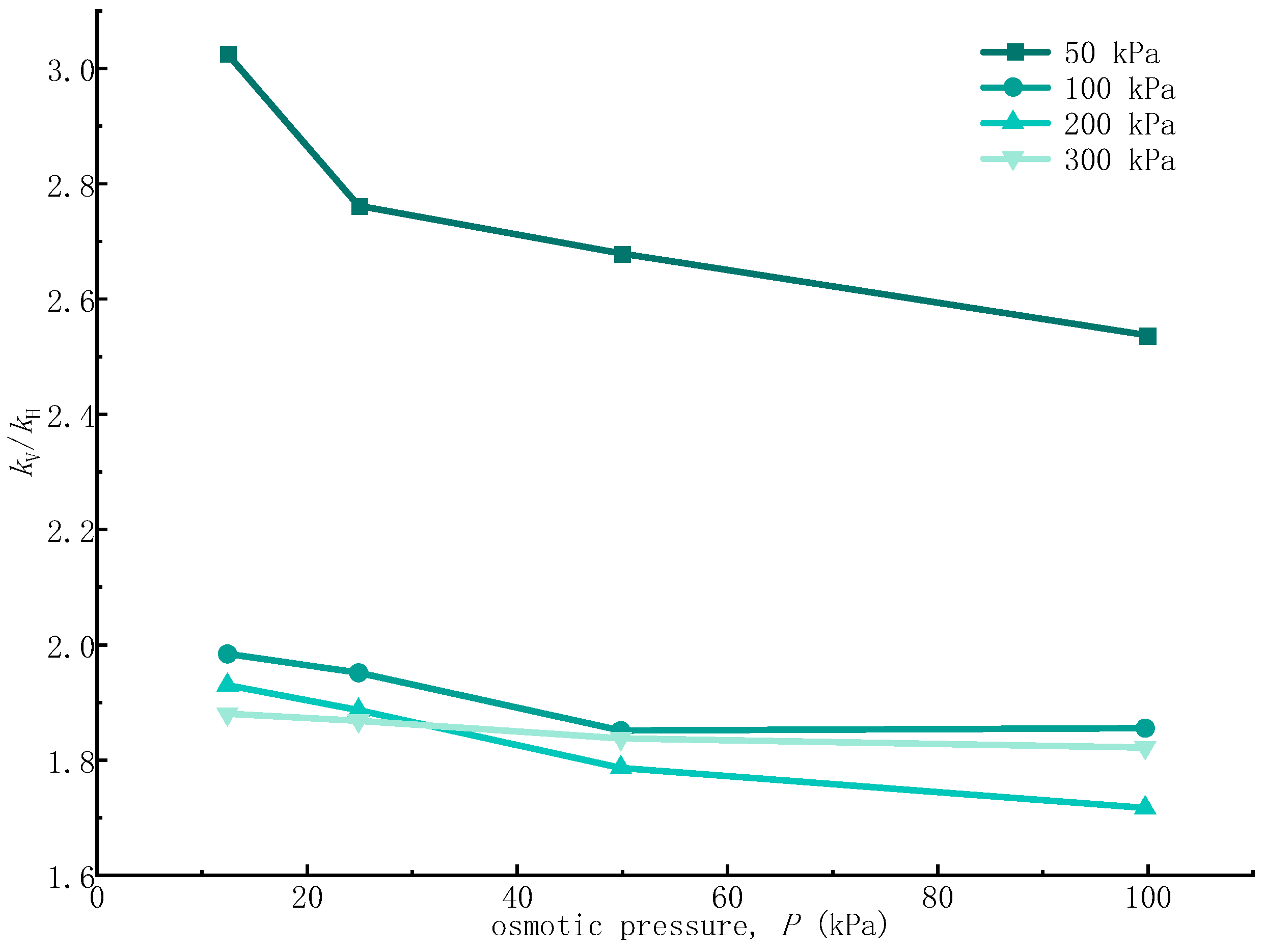
| Natural Moisture Content (%) | Optimum Moisture Content (%) | Maximum Dry Density (g/cm3) | Specific Gravity Gs | Liquid Limit ωL/% | Plastic Limit ωP/% | Plasticity Index IP |
|---|---|---|---|---|---|---|
| 36.7 | 18.6 | 1.89 | 2.65 | 57.8 | 25.9 | 31.9 |
Disclaimer/Publisher’s Note: The statements, opinions and data contained in all publications are solely those of the individual author(s) and contributor(s) and not of MDPI and/or the editor(s). MDPI and/or the editor(s) disclaim responsibility for any injury to people or property resulting from any ideas, methods, instructions or products referred to in the content. |
© 2024 by the authors. Licensee MDPI, Basel, Switzerland. This article is an open access article distributed under the terms and conditions of the Creative Commons Attribution (CC BY) license (https://creativecommons.org/licenses/by/4.0/).
Share and Cite
Chen, D.; Hou, X.; Wu, C. Investigation of Red Clay Internal Stress Anisotropy and Influence Factors. Appl. Sci. 2024, 14, 5592. https://doi.org/10.3390/app14135592
Chen D, Hou X, Wu C. Investigation of Red Clay Internal Stress Anisotropy and Influence Factors. Applied Sciences. 2024; 14(13):5592. https://doi.org/10.3390/app14135592
Chicago/Turabian StyleChen, Dongshan, Xiaoqiang Hou, and Chaoyang Wu. 2024. "Investigation of Red Clay Internal Stress Anisotropy and Influence Factors" Applied Sciences 14, no. 13: 5592. https://doi.org/10.3390/app14135592





